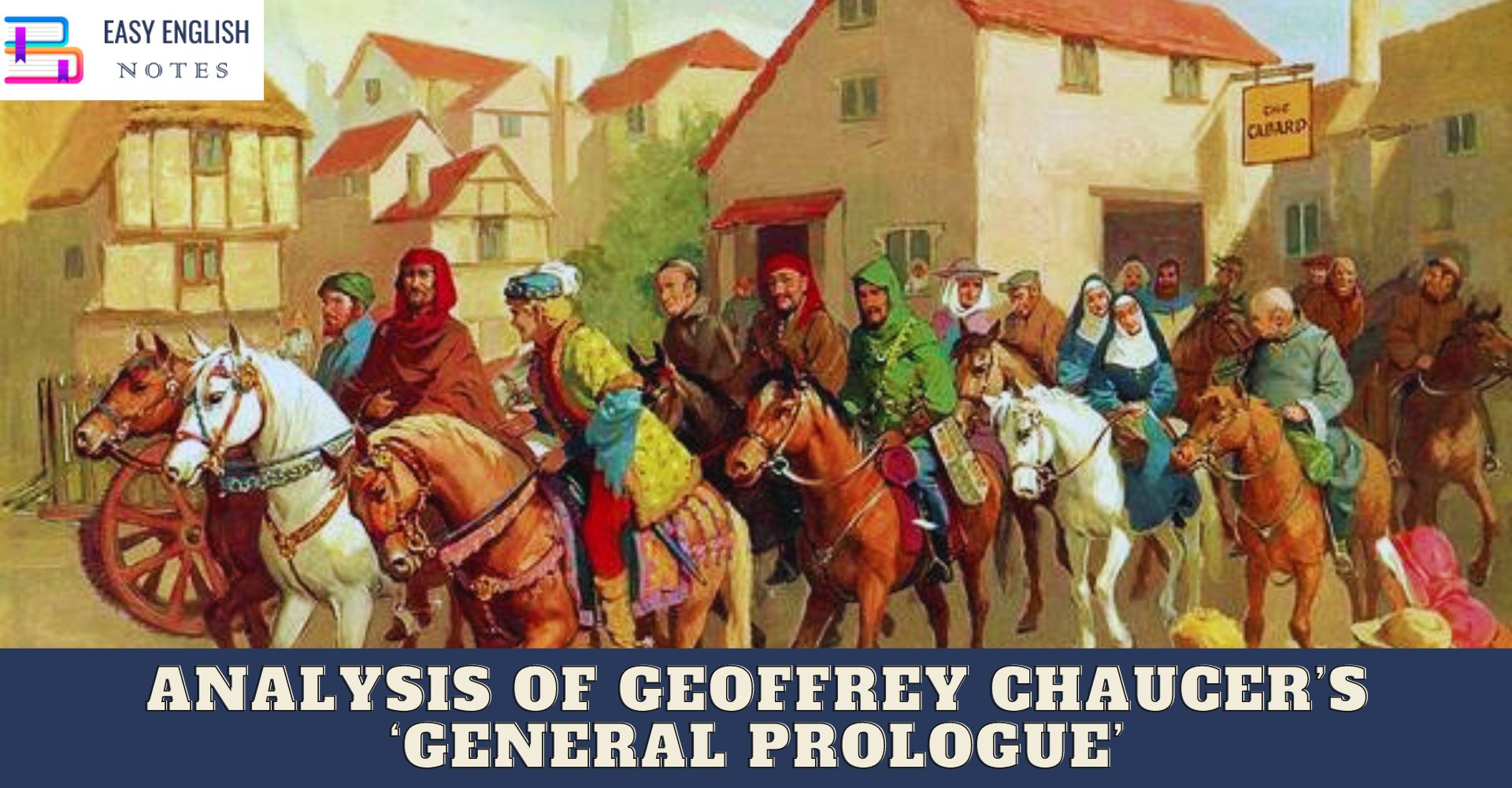The General Prologue was probably written early in the composition of the Canterbury Tales, and offers an interesting comparison point to many of the individual tales itself. Of course, it does not match up to the tales as we have them in a number of ways: the Nun’s Priest and the Second Nun are not described, and, most significantly, the work as we have it does not reflect the Host’s plan. For starters, the pilgrimage only seems to go as far as Canterbury (for the Parson’s Tale) and only the narrator tells two tales on the way there, with all the other pilgrims telling only a single tale (and some who are described in the General Prologue not telling a tale at a all).
We must, therefore, view the General Prologue with some hesitation as a comparison point to the tales themselves: it offers useful or enlightening suggestions, but they are no means a complete, reliable guide to the tales and what they mean. What the General Prologue offers is a brief, often very visual description of each pilgrim, focusing on details of their background, as well as key details of their clothing, their food likes and dislikes, and their physical features. These descriptions fall within a common medieval tradition of portraits in words (which can be considered under the technical term ekphrasis).
Chaucer’s influence in this case most likely coming from The Romaunt de la Rose.
Immediately, our narrator insists that his pilgrims are to be described by ‘degree’. By the fact that the Knight, the highest-ranking of the pilgrims, is selected as the first teller, we see the obvious social considerations of the tale.
Still, all human life is here: characters of both sexes, and from walks of life from lordly knight, or godly parson down to oft-divorced wife or grimy cook.
Each pilgrim portrait within the prologue might be considered as an archetypal description. Many of the ‘types’ of characters featured would have been familiar stock characters to a medieval audience: the hypocritical friar, the rotund, food-loving monk, the rapacious miller are all familiar types from medieval estates satire. Larry D. Benson has pointed out the way in which the characters are paragons of their respective crafts or types – noting the number of times the words ‘wel koude’ and ‘verray parfit’ occur in describing characters.
Also Read :
- Compare Hamlet with Macbeth, Othello and other Tragedies
- “The Pardoner’s Tale” is the finest tale of Chaucer
- Prologue to Canterbury Tales – (Short Ques & Ans)
- Confessional Poetry – Definition & meaning
Yet what is key about the information provided in the General Prologue about these characters, many of whom do appear to be archetypes, is that it is among the few pieces of objective information – that is, information spoken by our narrator that we are given throughout the Tales. The tales themselves (except for large passages of the prologues and epilogues) are largely told in the words of the tellers: as our narrator himself insists in the passage. The words stand for themselves: and we interpret them as if they come from the pilgrims’ mouths.
What this does – and this is a key thought for interpreting the tales as a whole- is to apparently strip them of writerly license, blurring the line between Chaucerand his characters.
Thus all of the information might be seen to operate on various levels. When, for example, we find out that the Prioress has excellent table manners, never allowing a morsel to fall on her breast, how are we to read it? Is this Geoffrey Chaucer ‘the author of The Canterbury Tales’ making a conscious literary comparison to The Romaunt de la Rose, which features a similar character description (as it happens, of a courtesan)? Is this ‘Chaucer’ our narrator, a character within the Tales providing observation entirely without subtext or writerly intention? Or are these observations – supposedly innocent within the Prologue to be noted down so as to be compared later to the Prioress’ Tale?
Chaucer’s voice, in re-telling the tales as accurately as he can, entirely disappears into that of his characters, and thus the Tales operates almost like a drama. Where do Chaucer’s writerly and narratorial voices end, and his characters’ voices begin? This self-vanishing quality is key to the Tales, and perhaps explains why there is one pilgrim who is not described at all so far, but who is certainly on the pilgrimage – and he is the most fascinating, and the most important by far: a poet and statesman by the name of Geoffrey Chaucer.
PLEASE HELP ME TO REACH 1000 SUBSCRIBER ON MY COOKING YT CHANNEL (CLICK HERE)











